The Importance of Teaching Prosody as Part of Reading Fluency
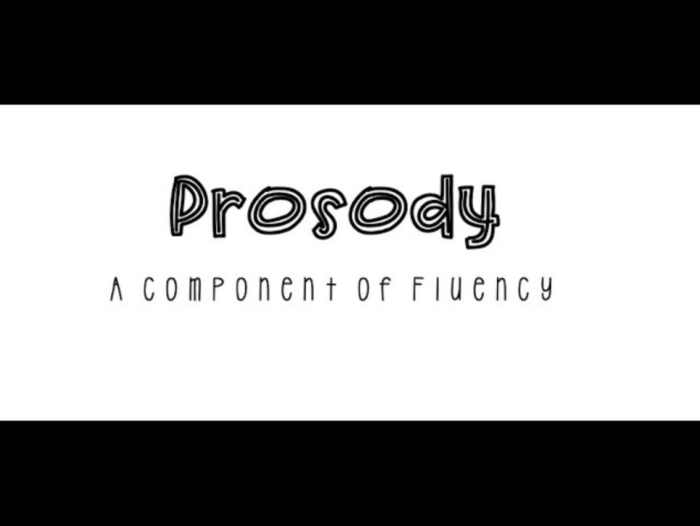
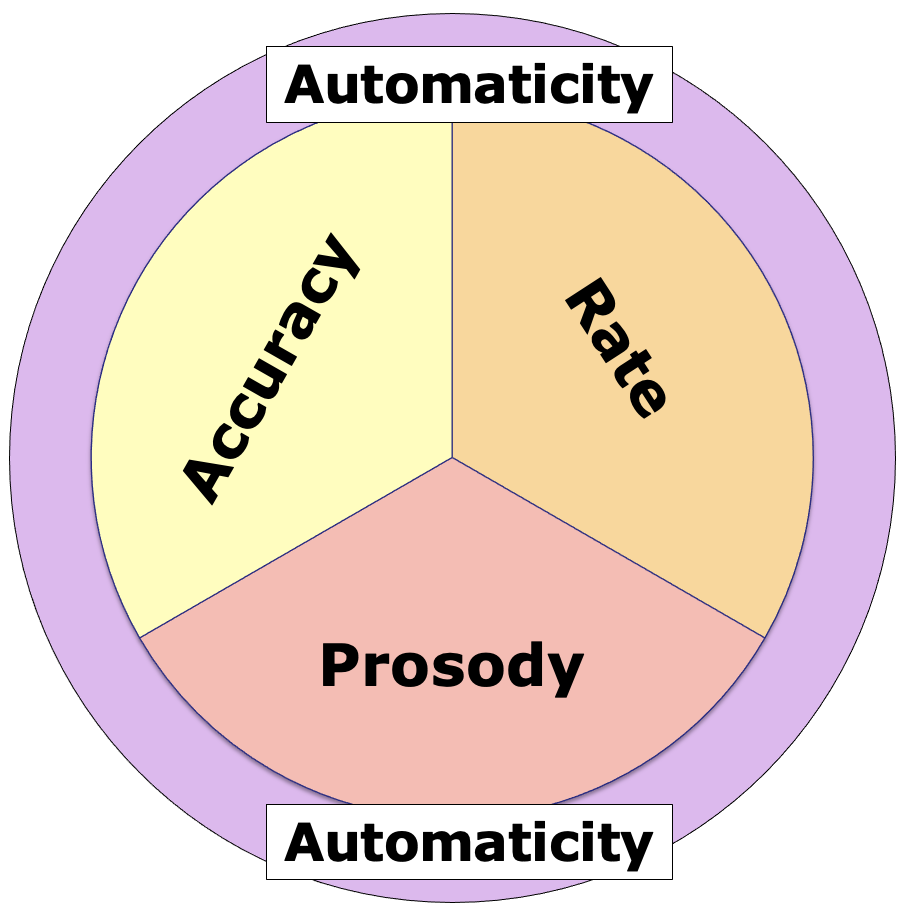
Fluency, along with phonemic awareness, phonics, vocabulary, and comprehension, is one of the five components of reading identified by the National Reading Panel (2000). The panel found compelling evidence that instruction to increase reading fluency is critical to both comprehension and future reading success and ease. Fluency plays a role in helping students become motivated readers. It is the ability to read connected text at varying degrees of complexity accurately, appropriately paced, with logical phrasing and prosodic expression, with little conscious attention to the mechanics of reading. Fluency combines rate, accuracy, automaticity, and oral reading prosody (expression), which taken together facilitate the reader’s construction of meaning.
Prosody is the rhythmic and melodic aspects of speech. It is reading with good expression, intonation, including pitch, tone, volume, and emphasis on certain words. Fluent readers chunk words together in appropriate, meaningful phrases, and use their voice to convey and enhance the meaning of the text. They know how to pause appropriately at the end of sentences.
Teachers often focus on just rate and accuracy for fluency instruction. However, research over the past 20 years has shown that prosody is consistently and significantly associated with reading proficiency. Readers who read orally with good expression tend to comprehend well when they read orally or silently, and this is true across all grades (Rasinsky; Paige et al., 2013). The report of the National Reading Panel’s meta-analysis on reading instruction (2000) highlighted the significance of prosody, noting that explicit instruction in prosodic features positively influences reading fluency and comprehension and recommended incorporating prosody in reading instruction to develop proficient readers.
Prosody also contributes to word recognition and decoding. It helps readers identify word boundaries, syntactic structures, and word meanings. By using prosodic cues, readers enhance their ability to decipher unfamiliar words and improve reading accuracy.
Assessing Prosody
The most practical way to assess prosody is for the teacher to listen to a student read orally. On an informal level, students who have not developed prosodic oral reading tend to read word-by-word without stopping at the end of a sentences or pausing at logical phrasing breaks within a sentence. Their voice will be monotone, without inflection. For more formal assessment of prosody, teachers can ask students to read out loud and rate expressiveness using a guiding rubric. Prosody rubrics typically address categories such as levels of expression, phrasing, and pacing. Examples include guides from Cox Campus Cox Campus, Duke University, and Colorado Department of Education. Students can be taught to listen to a peer reading out loud, determining if the peer is reading with prosody. A simple guide can be given to young students such as the peer checklist xample below from Keys to Literacy’s Keys to Beginning Reading professional development course.
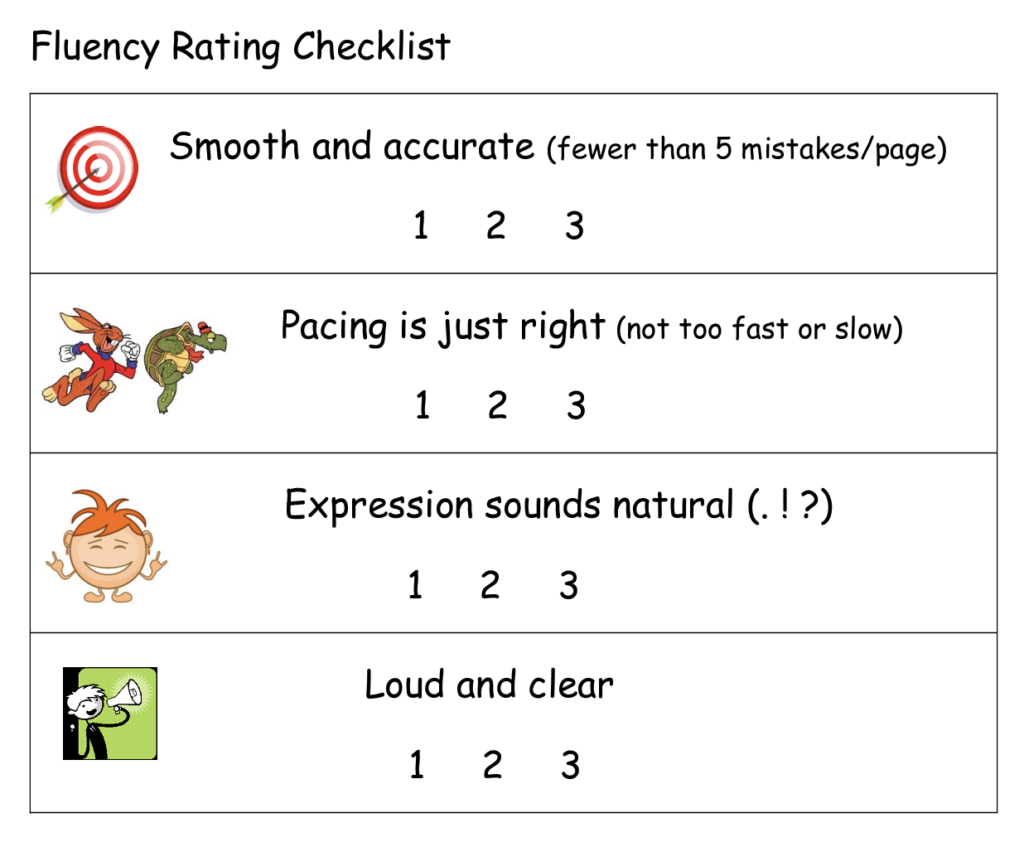
The chart below is an example of a more detailed set of self-reflection statements for grade two and three students reading a story that addresses elements of prosody as well as rate and accuracy. It is adapted from the Listen to Me chart by the Florida Center for Reading Research (2006).
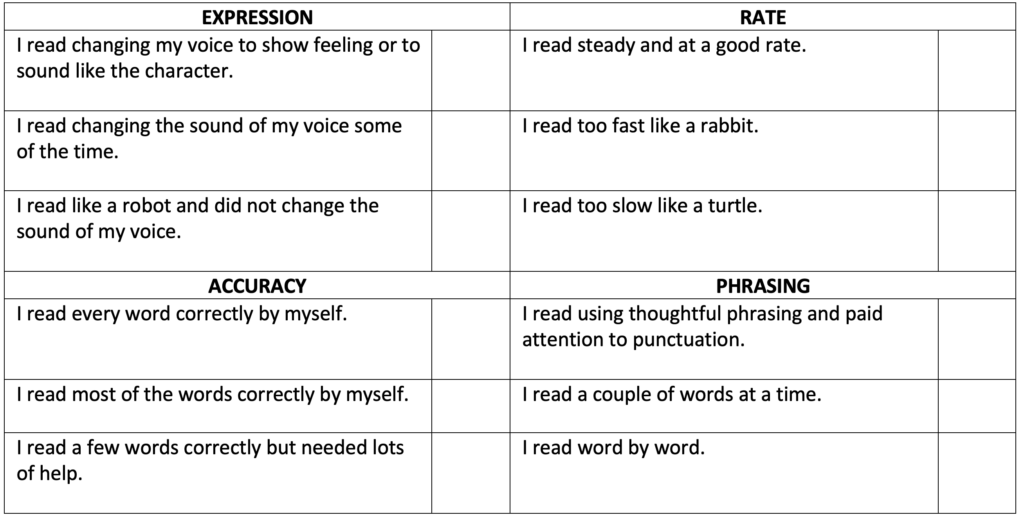
Instructional Suggestions for Improving Prosody
Modeling and Guided Practice: Teachers can model expressive reading by providing examples of how to use prosodic features effectively. Through guided practice, students can apply features of reading with expressions such as intonation, stress and phrasing.
Choral Reading: Choral reading involves students reading a text together as a group. It provides an opportunity for students to observe and imitate fluent readers, promoting accurate expression and rhythm. Choral reading helps develop students’ prosodic skills and encourages them tor ead with appropriate phrasing and intonation.
Repeated Readings: Engaging students in repeated readings of the same text support the development of fluency, including prosody. Through repeated exposure to the same words and phrases in a text passage, students refine their expressive reading and increase their automaticity, leading to improved prosodic skills and overall fluency.
Activities to Develop Prosody
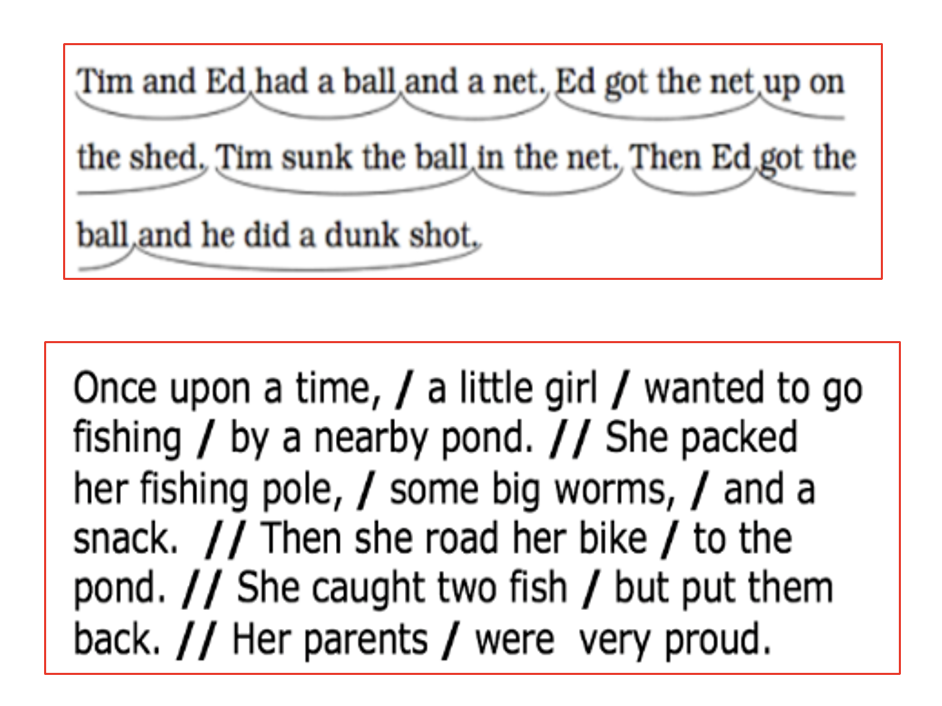
Phrase Reading: For this activity, the teacher chunks words into phrases using a scooping or slashing techniques, as shown in the visual. Students use the notations to help them develop an awareness of phrases and the need to pause between phrases.
The two activities below are examples of engaging activities that can be used to help students develop prosody. They are from the Keys to Beginning Reading professional development course.
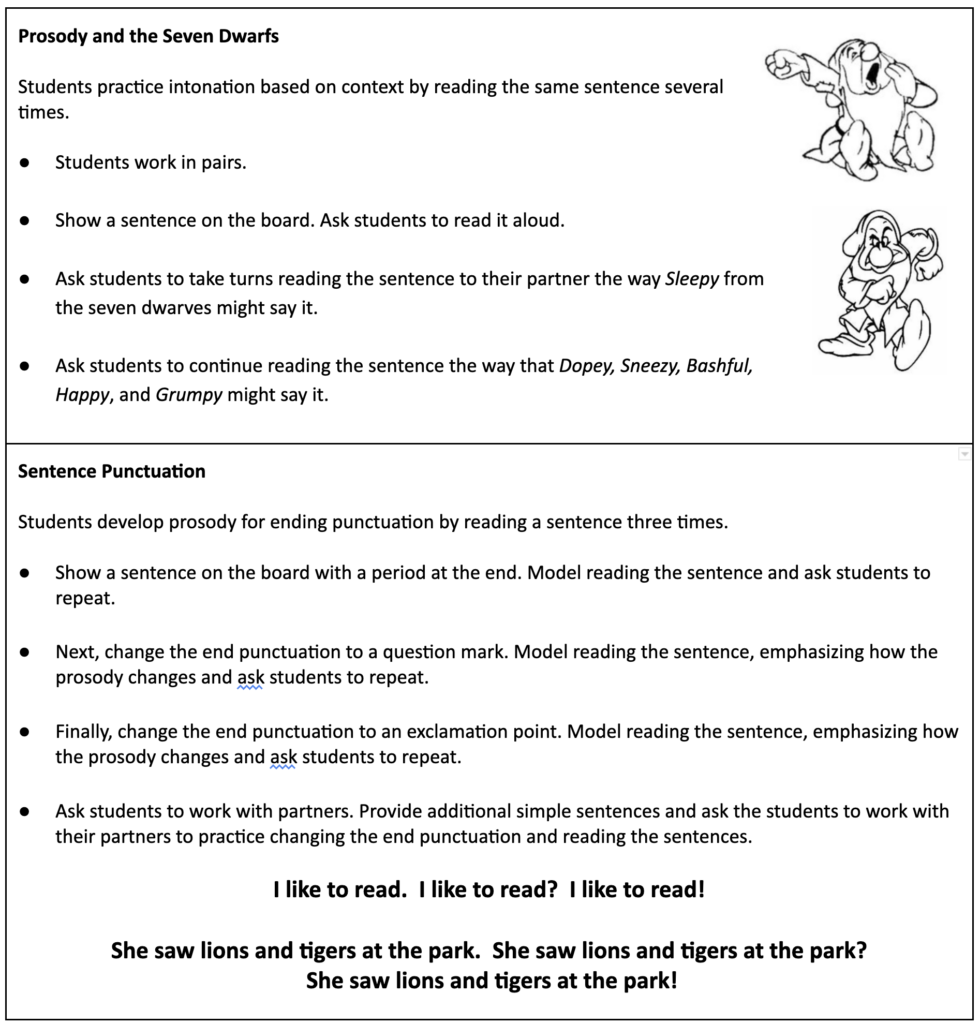
Additional Resources
- Research Article: The role of prosody in reading comprehension: evidence from poor comprehenders. Groen, M. 2018
- Recorded Webinar: Reading Fluency – What have we learned since 2000? Jan Hasbrouck, sponsored by Learning Difficulties Australia
- Video: Reading Fluency with Chloe, Second Grader. Reading Rockets (prosody is addressed in part 1 at the 11:47 minute point in the video)
References
National Institute of Child Health and Human Development. (2000). Report of the National Reading Panel. Teaching children to read: An evidence-based assessment of the scientific research literature on reading and its implications for reading instruction (NIH Publication No. 00-4769). Washington, DC: U.S. Government Printing Office
Paige, D. D., Magpuri-Lavell, T., Rasinski, T. V, & Smith, G. (2013). Interpreting the relationships among prosody, automaticity, accuracy, and silent reading comprehension in secondary students. Journal of Literacy Research, 46(2), 123-156
Rasinsky, T. Prosody: The Other Side of Fluency. Vocabulary SpellingCity.com (blog post).
Rasinski, T. (2010). The Fluent Reader. New York: Scholastic.

 Joan Sedita is the founder of Keys to Literacy and author of the Keys to Literacy professional development programs. She is an experienced educator, nationally recognized speaker and teacher trainer. She has worked for over 35 years in the literacy education field and has presented to thousands of teachers and related professionals at schools, colleges, clinics, and professional conferences.
Joan Sedita is the founder of Keys to Literacy and author of the Keys to Literacy professional development programs. She is an experienced educator, nationally recognized speaker and teacher trainer. She has worked for over 35 years in the literacy education field and has presented to thousands of teachers and related professionals at schools, colleges, clinics, and professional conferences.
Thanks for this website and its resources. I have been teaching 7th grade English for some time now and am really seeing results from oral language practiced reading.
The number of students who connect with reading and take pride in their voices and their reading is pretty magical for me.
I have not taught the word “prosody” yet, but I have implemented many of its component into performance rubrics and class vocab. I am adding “prosody” next year!